Database Statistics & Name Variant Analysis
Database Overview
26612
Total Cemetery Records
18543
Estimated Unique Individuals
31
Documented Cemeteries
1900-2025
Years Covered
Name Variants & Canonical Forms Analysis
Understanding Name Standardization
Our database contains 18,284 name entries that map to 10,797 unique canonical forms, demonstrating the rich linguistic diversity of Moroccan Jewish surnames across different scripts, spellings, and transliterations.
This analysis reveals how historical migration, multilingual environments, and transcription practices created numerous variants of the same family names.
Total Name Entries
All name forms in database
Canonical Forms
Standardized name variants
Avg. Variants per Name
Spelling variations ratio
Statistical Visualizations Gallery
Click on any chart below to view it in full resolution for detailed analysis.
Cemetery Distribution

Top 10 cemeteries by number of records
Name Patterns Analysis
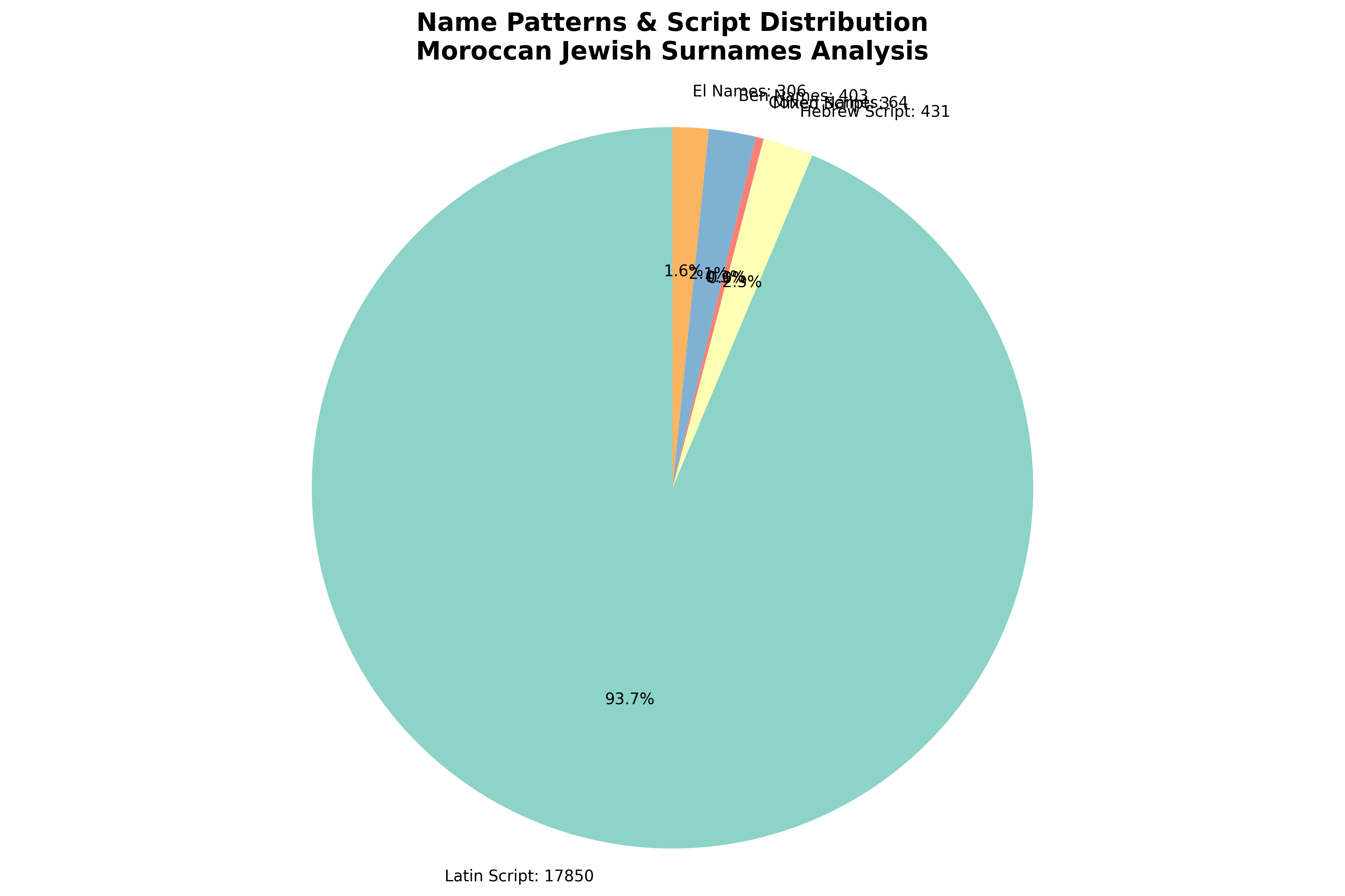
Script distribution and cultural patterns
Surname Variant Frequency
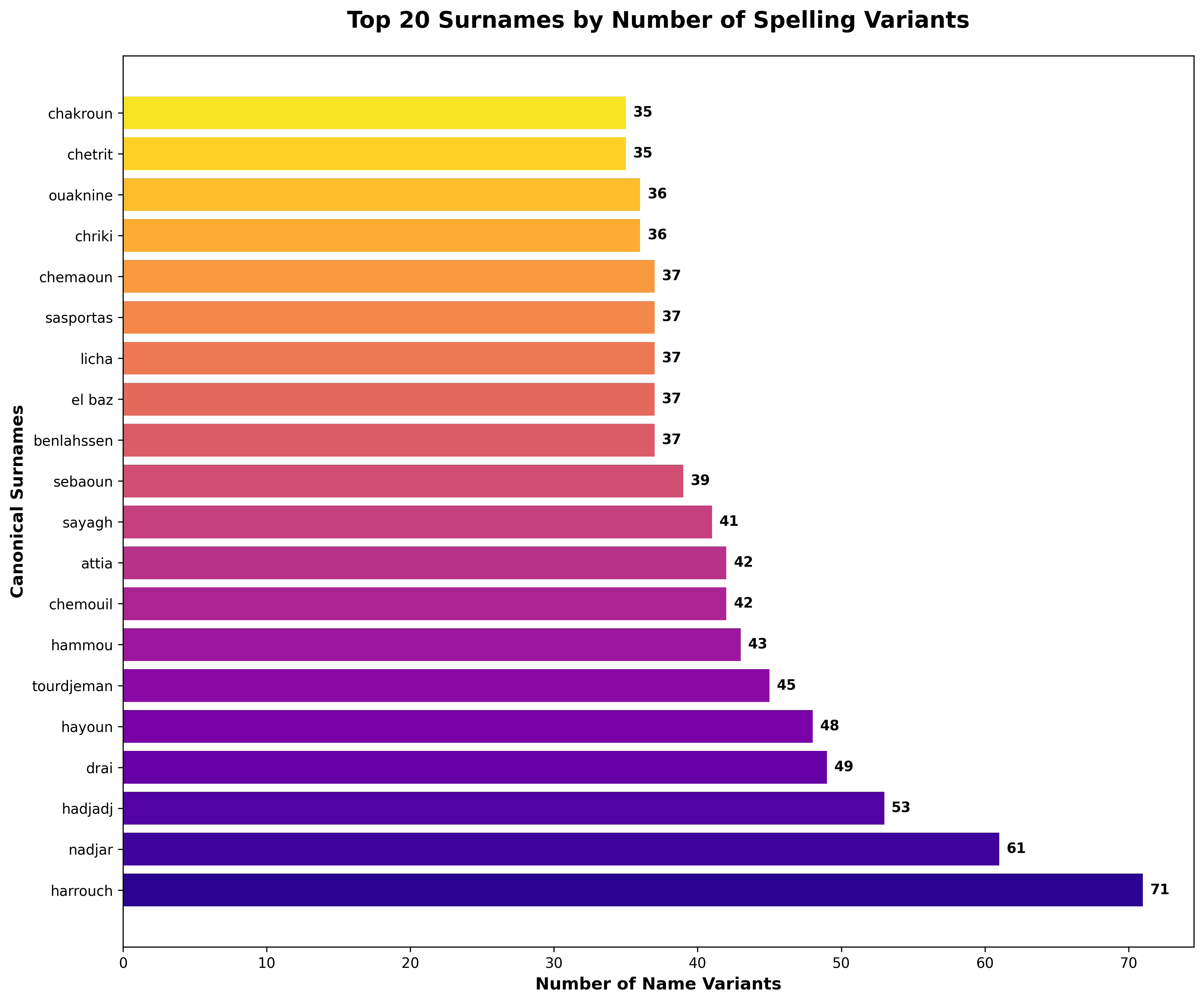
Top 20 surnames by variant count
Harrouch Family Network
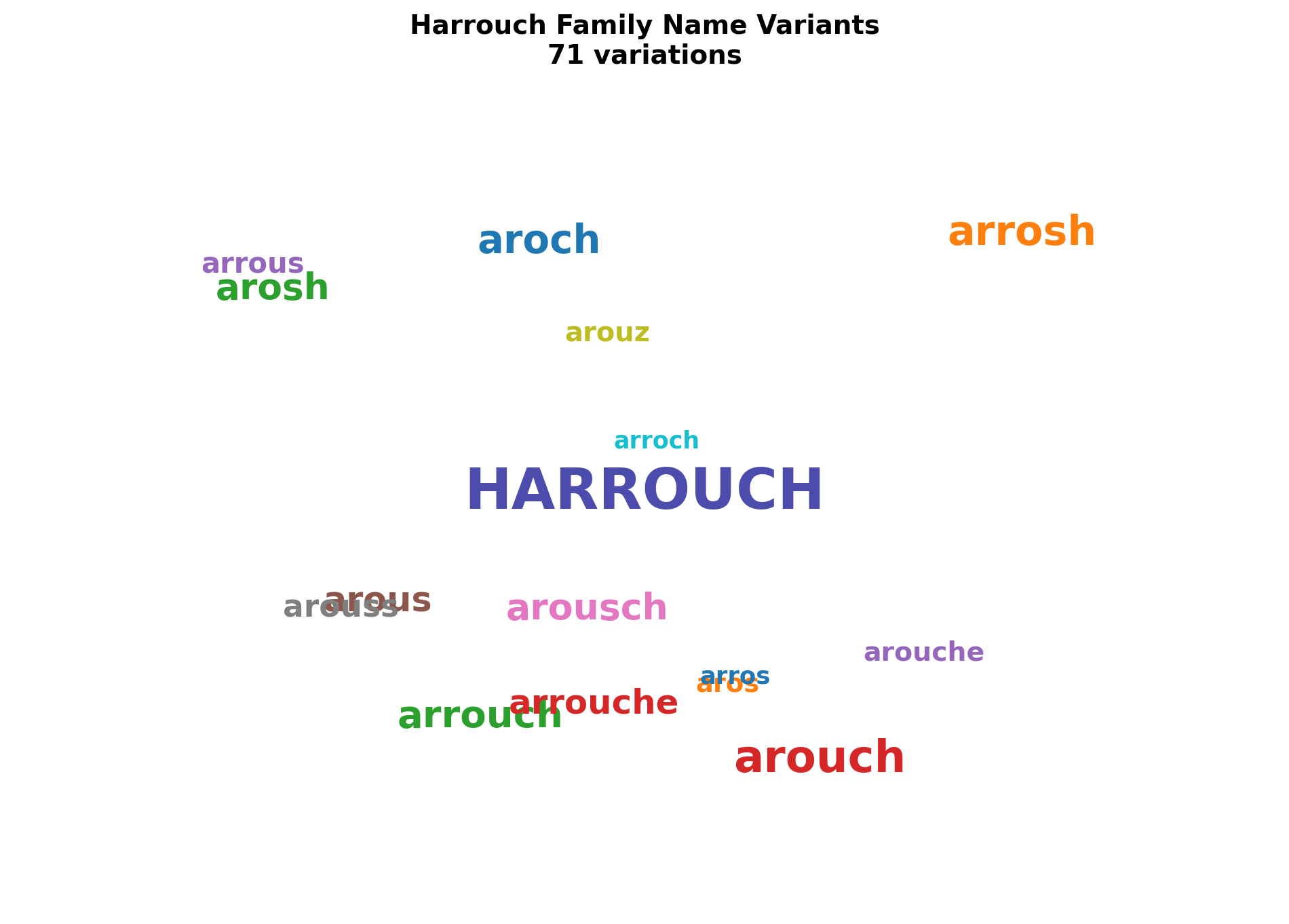
Social network showing 71 Harrouch variants
Nadjar Family Network
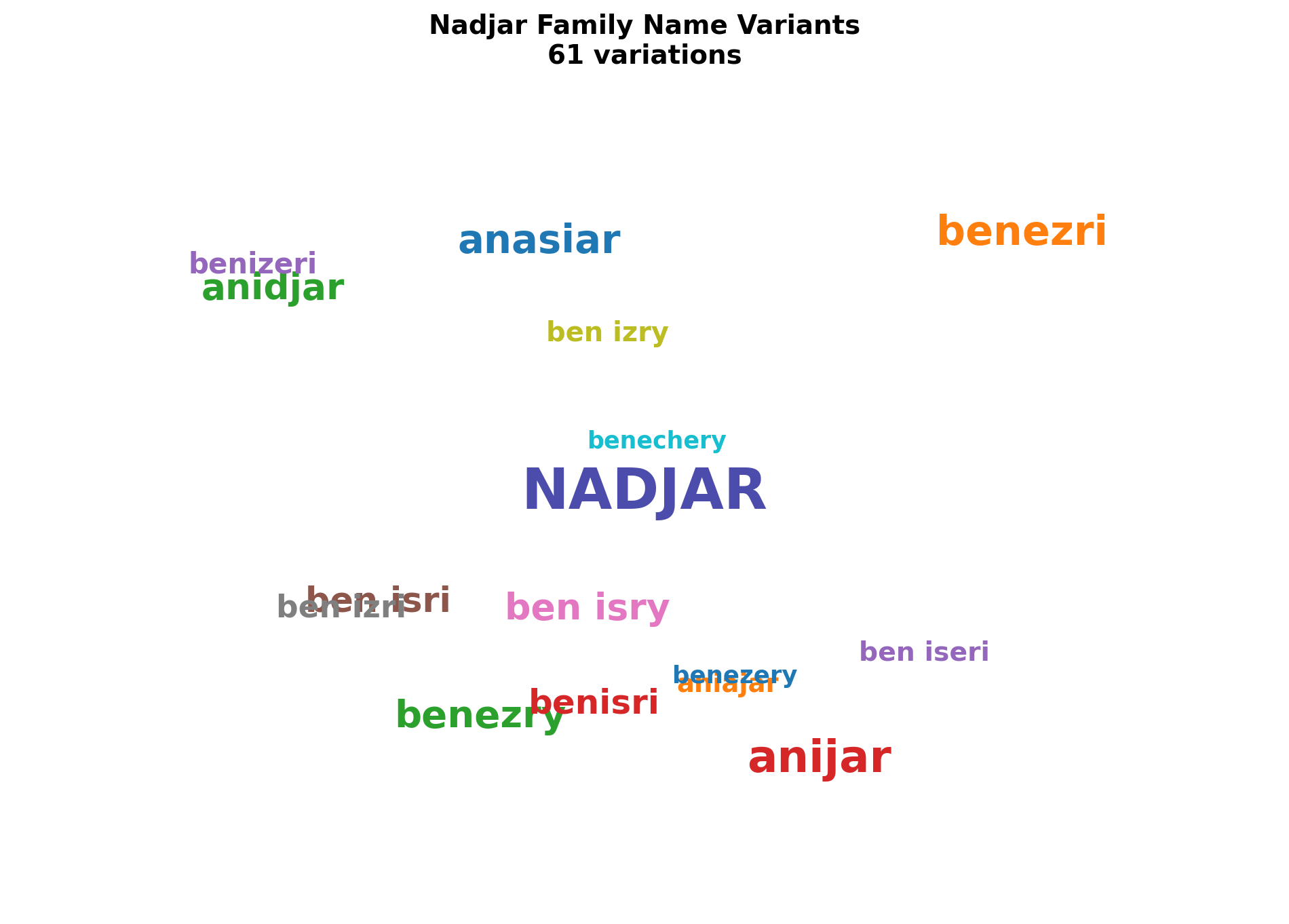
Social network showing 61 Nadjar variants
Hadjadj Family Network
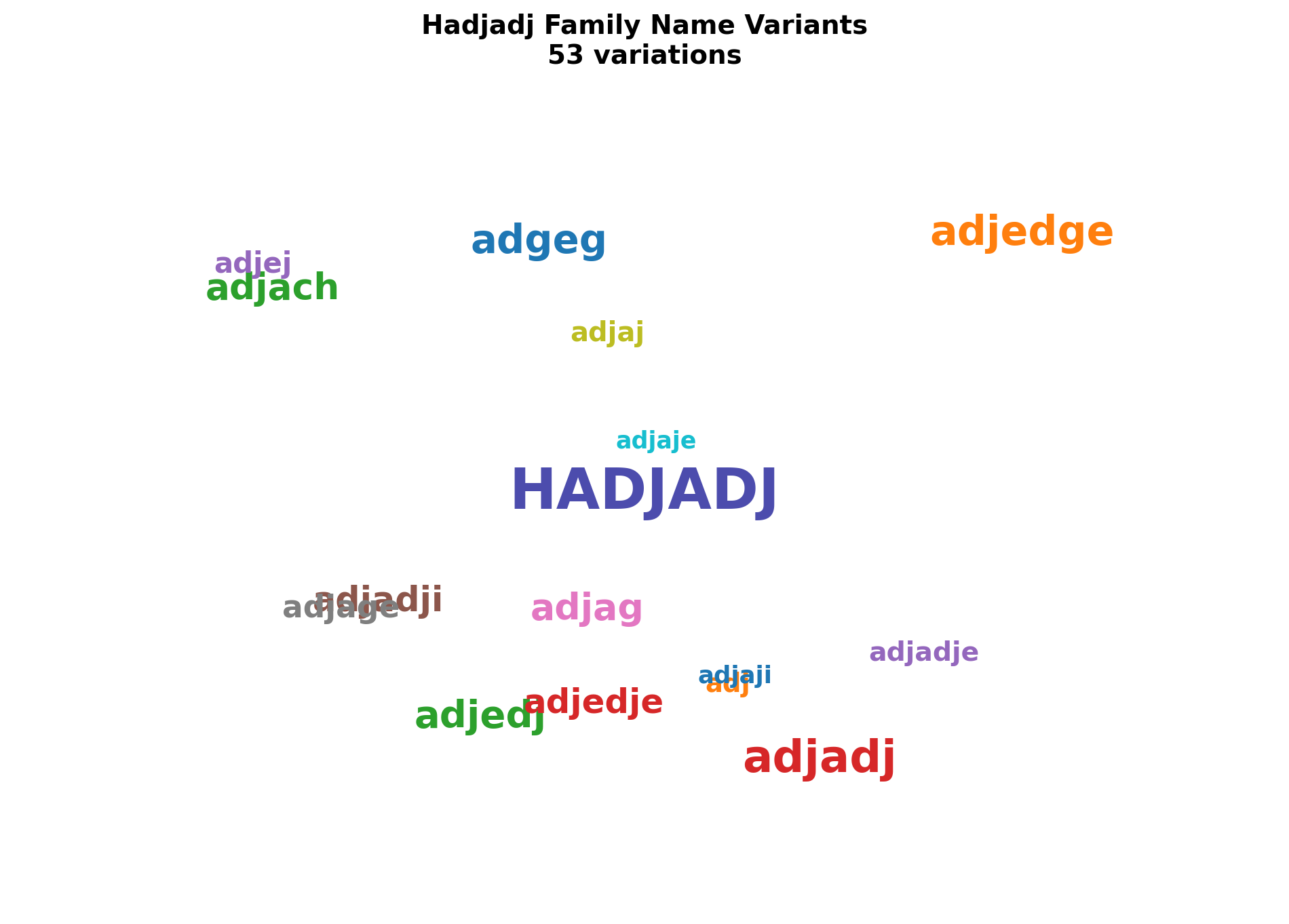
Social network showing 53 Hadjadj variants
Most Common Canonical Names
These surnames show the highest number of spelling variants, indicating their prevalence in different communities and time periods.
Top 10 Names by Variant Count
Additional High-Variant Names
Script & Language Distribution
Script Analysis
Distribution of names by writing system used
Name Complexity
Average characteristics of name entries
Traditional Name Patterns
Analysis of common prefixes and patterns in Moroccan Jewish surnames reveals cultural and historical influences.
Cohen Pattern
Names containing Cohen/כהן indicating priestly lineage
Ben Pattern
Names with Ben/בן meaning "son of"
El Pattern
Names with El/אל prefix meaning "the"